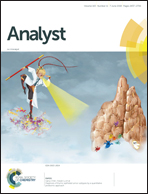Reconstituting donor T cells increase their biomass following hematopoietic stem cell transplantation†
Abstract
In this study, we used a rapid, highly-sensitive, single-cell biomass measurement method, Live Cell Interferometry (LCI), to measure biomass in populations of CD3 + T cells isolated from hematopoietic stem cell transplant (SCT) patients at various times pre- and post-transplant (days 0–100). CD3 + T cell ‘mass spectra’ were obtained from five autologous and 20 allogenic transplant recipients. We found a pronounced rise in median T cell biomass (+25%; p <0.001) shortly after transplant (day 14), which moderated by day 60. Further, the inter-patient and intra-patient cell masses were most variable at days 14 and 30 post-transplant. T cell biomass trends were similar in both autologous and allogenic transplant recipients. These data suggest that T cell biomass changes are associated with immune reconstitution occurring in the first few weeks post-transplant. To our knowledge, this is the first time single-cell biomass measurements have been studied in human clinical trials. With refinement, these data may prove useful in guiding the withdrawal of immunosuppression following SCT, reducing the likelihood of Graft-Versus-Host Disease or cancer relapse occurring.



 Please wait while we load your content...
Please wait while we load your content...